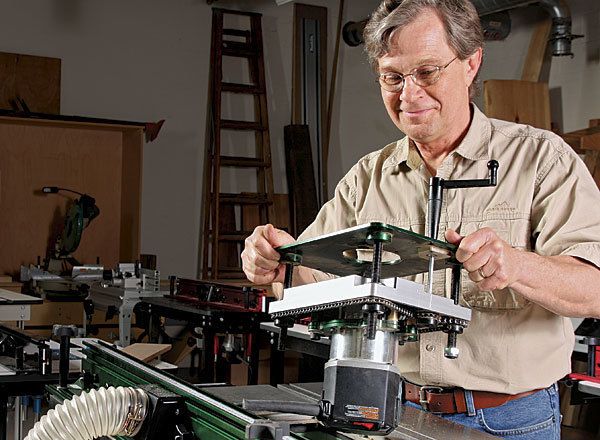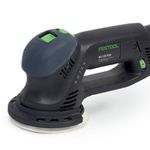Tool Test: Router Lifts
Above-table adjustments and bit changes are just the beginning
Synopsis: Changing router bits and adjusting the height are two things you’ll do a lot when using a router table. Both tasks can be frustrating, requiring you to reach under the table for bit changes or unlock it for height adjustments. And you may struggle with accuracy. The solution is a router lift with a router motor clamped into it. With a lift, you can raise and lower the motor to make bit-height adjustments from above the table. There is also enough vertical movement to get the collet above the table so you can change bits without removing the motor. We tested seven lifts side by side to see which were the most convenient and accurate. Models tested include Excalibur 40-125, Jessem Rout-R-lift IIV, Bench Dog 40-150, JessEm Mast-R-Lift II, Rockler Router Lift FX, Woodhaven EZ Lift, Woodpeckers PRL-V2.
No matter what job you’re doing with your router table—profiling edges or cutting rabbets, dadoes, or dovetails—there are two things that you end up doing a lot: changing bits and adjusting the bit height. Both tasks can be frustrating, requiring you to reach under the table to remove the router for bit changes, or to unlock it for height adjustments. And you may struggle with accuracy.
The solution is a router lift with a router motor clamped into it. With a lift, you can raise and lower the motor to make bitheight adjustments from above the table. There is also enough vertical movement to get the collet above the table so you can change bits without removing the motor.
If you don’t have a router lift, consider getting one. To save you from having to wade through countless online reviews and search results, FWW’s editors asked me to test the lifts currently on the market. I got seven lifts into the shop and examined them side-by-side. I’ll tell you which lift proved to be better than the rest and which is the best option for woodworkers on a tight budget.
Convenience is the main reason to get a router lift. The ability to change the bit and adjust bit height precisely without reaching under the table will cut your setup time in half, and make everything you do at the such as poorly fitting joinery and bit chatter, which can result in tearout. All of the lifts had very little misalignment, or could be adjusted to compensate for it.
I used two tests to check for vertical play in the lead screw—a measurement of more than 0.005 in. is too much. First, I simply set the router collet (without a bit) to a specific height and then tried to push the motor down by pressing on the collet. Most of the lifts showed less than 0.003 in. of change. I then put a big bit in the router, measured the motor’s height relative to the table, and took a full cut with it. After the cut, I measured the motor’s height again. All of the lifts did very well on this test, moving less than 0.002 in.
Three lifts, the Woodpeckers PRl-V2 and the two from JessEm, have heightadjustment locks. I tested these lifts with the lock both engaged and disengaged. The locks did not make a difference, and it’s not necessary to use them.
For the full article, download the PDF below:
Fine Woodworking Recommended Products

Dividers

Stanley Powerlock 16-ft. tape measure

Festool Rotex FEQ-Plus Random Orbital Sander























Log in or create an account to post a comment.
Sign up Log in